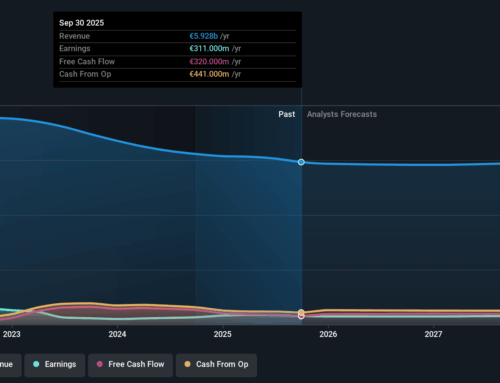Prediction: Ethereum Will Be Worth $5,000 in 1 Year
October 22, 2025
The world’s second-largest cryptocurrency still has a bright future.
Ether (ETH 1.59%), the native token of the Ethereum blockchain, generated massive gains for its earliest investors. If you had invested just $100 at its earliest trading price of $0.75 10 years ago, your investment would be worth more than $500,000 today.
With a market cap of $450 billion, it’s now the world’s second-most valuable cryptocurrency after Bitcoin (BTC 0.73%). Yet the bulls believe Ether could soar even higher from its current price of about $3,800. Standard Chartered (OTC: SCBF.Y) expects it to nearly double to $7,500 by the end of this year and more than triple to $25,000 by 2028. VanEck’s Matthew Sigel and Patrick Bush expect it to reach $22,000 by 2030, while Ark Invest’s Cathie Wood sees its price soaring as high as $166,000 by 2032. We should take those rosy estimates with a grain of salt, but I believe Ether has a clear path toward reaching at least $5,000 within the next year for three simple reasons.

Image source: Getty Images.
1. Declining interest rates
Ether, along with many other cryptocurrencies, slumped in 2022 and 2023 as rising interest rates drove investors toward more conservative investments. But since the beginning of 2024, the Federal Reserve has cut its benchmark rates four times — and it’s expected to execute at least two more interest rate cuts by the end of this year.
As interest rates decline, more investors should pivot back toward riskier investments like cryptocurrencies. Lower interest rates should also weaken the U.S. dollar and boost the appeal of safe haven assets like gold. Ether and Bitcoin, which are both considered “blue chip” cryptocurrencies, could benefit from that rotation toward inflation-resistant assets.
2. Its next network upgrade
Ether was once a proof-of-work (PoW) token like Bitcoin, which could be actively mined. But in 2022, it transitioned to the more energy-efficient proof-of-stake (PoS) mechanism. As a PoS token, Ether can no longer be mined. It must be “staked” (or locked up) on the blockchain to earn interest-like rewards. It also gained support for smart contracts, which are used to develop decentralized apps (dApps), non-fungible tokens (NFTs), and other crypto assets.
After that transition, known as “The Merge,” Ethereum became the world’s largest development platform for decentralized apps. Ether’s supply declines when its network activity is high, since some Ether is burned (removed from circulation) as a gas fee with each transaction. But when its network activity is low, its supply rises. That’s why its scarcity is directly pinned to the growth of its developer ecosystem.

Ethereum
Today’s Change
(-1.59%) $-61.91
Current Price
$3844.21
Ethereum’s Layer-1 (L1) blockchain is much slower than newer PoS blockchains like Solana (SOL 0.32%). To keep up with those faster competitors, Ethereum relies on Layer-2 (L2) networks that run on top of its L1 blockchain. Those networks can bundle together their transactions and process then “off chain” at faster speeds.
Ethereum’s next upgrade, the Fusaka hard fork, should reduce the costs of those L2 “rollups” and improve their efficiency this November. Over the next few years, its L1 blockchain is scheduled for three more upgrades — The Verge, The Purge, and The Splurge — to improve its scalability, reduce its congestion and gas fees, and boost its efficiency.
3. Its new staking ETFs
The Securities and Exchange Commission (SEC) approved Ether’s first spot price exchange-traded funds (ETFs) last year, but those funds didn’t include any staking features — so their investors couldn’t earn an annual yield (currently around 3%) for locking up their tokens. Only two smaller ETFs in Canada added those staking features.
But this September, REX-Osprey launched the REX-Osprey ETH + Staking ETF (ESK +0.43%), the first spot price Ether ETF with staking features. Earlier this month, Grayscale launched the similar Grayscale Ethereum Trust ETF (ETHE +0.46%). Both funds were structured under the Investment Company Act of 1940 (“40 Act”), which allows ETFs to be listed on the CBOE (Chicago Board Options Exchange) instead of the bigger stock market exchanges with a much shorter SEC approval process.
As more of those staking ETFs arrive, more retail and institutional investors could ramp up their investments in Ether ETFs as an alternative to directly buying the tokens. Those increased investments could stabilize its price and drive it even higher over the next year.
A $5,000 price target is conservative
If Ether’s price rallies more than 30% to $5,000, its market cap would rise to just over $590 billion. That would still make it much less valuable than Bitcoin, which is worth $2.1 trillion. It would also fall short of its near-50% gain over the past 12 months. That’s why I believe Ether has a clear shot at clearing $5,000 within the next year as long as interest rates keep declining, its upgrades lock in more developers, and more staking ETFs are approved.
Search
RECENT PRESS RELEASES
Related Post



